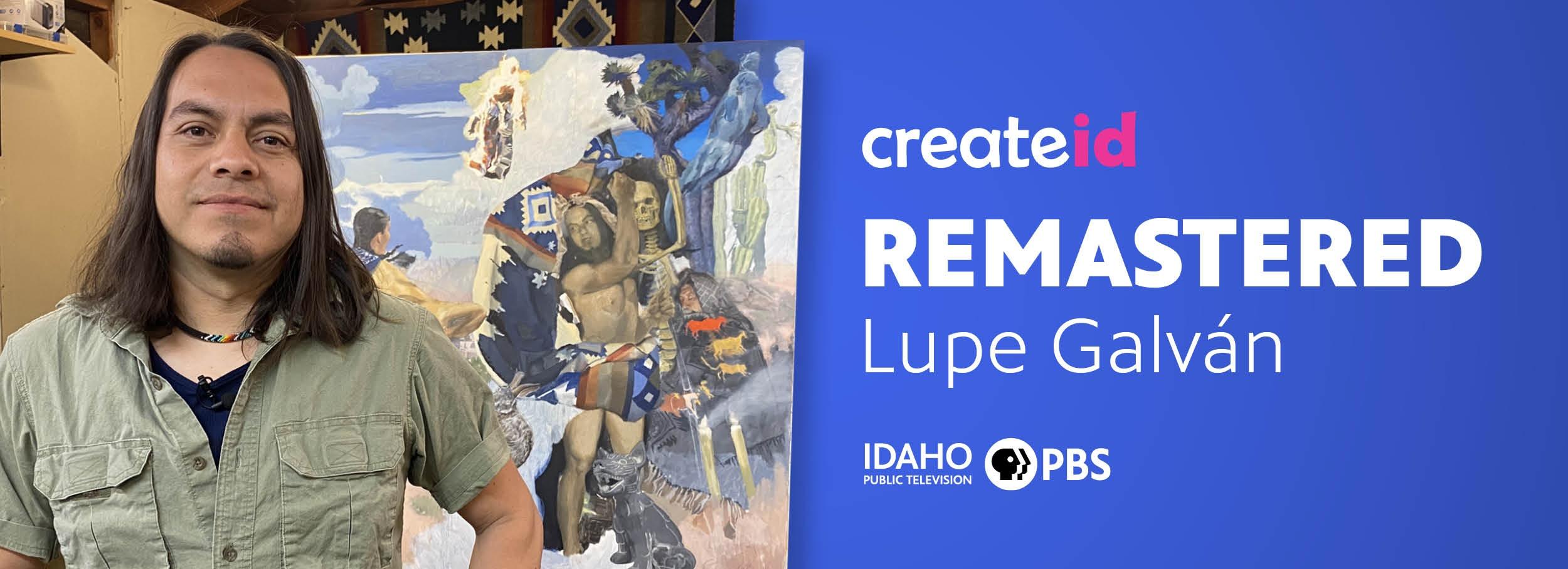When Lupe Galván was in sixth grade, his older sister brought an art history book home from college. Galván was immediately enthralled by the images of European paintings in it.
“I was in disbelief. I was like, ‘Oh, my God, what is this?’” says Galván. “I would keep it next to the bed, and you know, just look at it and look at it.”
Galván grew up in rural Owyhee County, Idaho, and did farmwork with his family when he wasn’t in school. “It was really, really hard,” he says. “I remember really, really being very upset that I had to do it. I would imagine that I was at the top of the hill, you know, and instead of working, I was actually outside doing plein air paintings.”
He started drawing and painting in elementary school, and then continued his passion for art by receiving a bachelor’s degree from Boise State University and a Master of Fine Arts from the New York Academy of Art. He came back to Idaho to teach and continue his painting practice.
I was intrigued by his artwork, which blends his longstanding interest in European painting with his Latino and indigenous heritage. I was also curious about his creative process. So over many months, director Troy Shreve and I filmed Lupe for a createid piece as Lupe worked on a painting called “Ancestors.” It’s his reimagining of the famous painting “Bacchus and Ariadne” by the 16th century Italian painter Titian.
“I love Titian paintings. And I guess in some ways I wanted to make it my own,” he told us.
In the Greek myth depicted by Titian, Ariadne is abandoned on the island of Naxos by her lover, Theseus. She is found by the god Bacchus, who immediately falls in love with her. In his “remastering” of the painting, Galván substitutes an image of a woman who is reminiscent of his mother and grandmother, both of whom have indigenous Mexican heritage.
The woman is reaching out to a man, who is modeled after himself, and the two are about to engage in a “perpetual dance of time.” Galván also included objects and animals that are referential to his background, including a xoloitzcuintle, a type of Mexican hairless dog, and a San Pedro cactus, from which traditional medicines are derived.
“It's really about an investigation of my personal history and paying an homage to that,” he says. “It’s about sort of recontextualizing European paintings and using European painting traditions to tell something that is not a specifically a European story.”
“The question I’m asking is, ‘Are our stories not beautiful as well?’”
The painting also includes a burning effigy, a nod to the painter José Clemente Orozco’s “Man of Fire.”
“He represents a new race that's going to be born out of chaos,” says Galván, “Where people were going to cast their notions of race and nationality into the fires, because he felt that those things were the things that were enslaving humankind.”
For Galván, that vision of human unity strikes a chord, one he tries to embody in his work.
“The way I look at art, to me it’s about empathy,” he says. “You know, I’m interested in your story, and hopefully we’re interested in everybody’s story.”
You can watch our story below, on our Facebook and Instagram pages, on our YouTube page and on our website. That’s also where you’ll find more createid pieces. Please follow us online, and feel free to suggest ideas by writing to us at create@idahoptv.org!
